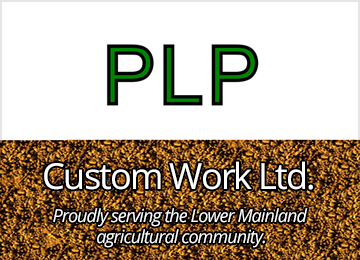words: Jim Narraway
When it comes to tools of the trade, farmers understand the importance of using tools appropriate for the work at hand. Using the right tool equals the right results.
Knowing which financial tools are best suited to meet a particular financial need can be difficult, if not confusing. This is especially true of credit and the array of facilities available.
A decision that producers often face is whether to meet a financial need using available room on an existing line of credit or to give their commercial account manager a call and arrange term financing.
Blind spots on the path of least resistance
The most common mistake that an account manager sees is when available room on an approved line of credit is used to purchase a piece of equipment with a price tag in the tens of thousands of dollars. Often, the underlying assumption is that the income from the farm is sufficient to cover all of the farm’s ongoing operating costs as well as the equipment purchase, so why not use the line of credit?
When considering the credit facilities available to your farm operation, don’t be tempted to take the path of least resistance.
While using an existing line of credit is easy, it also has blind spots. The farmer may be right about cash flow, but what if it isn’t sufficient to cover expenses and a costly purchase? Or worse yet, what if there is an unexpected, expensive repair that needs to be made immediately and there isn’t sufficient room in the line of credit to cover this repair?
Deciding whether to use the line of credit or to arrange new financing should be based on the expense type. Is the expense strictly for farm operating costs, such as repairs, purchase of feed inventories, and so forth? Then the tool to choose is the line of credit, because operating costs are usually much lower than equipment costs, leaving more room in the line of credit as a buffer should other unexpected operating costs arise. But if the expense is an equipment purchase, especially high-cost items like tractors or other vehicles, then term financing is the right tool for the job.
Advantages of term financing
In most cases, the best way to buy any type of equipment or vehicle is to work with your account manager to make an application for the purchase. There are a number of advantages to this approach:
- The loan can be set up with repayment terms that can easily be covered from the farm’s cash flow. These types of loans can usually be set up for three to five years, or longer in some cases.
- The interest on the loan is an expense that would be deducted from the farm’s gross income. Typically, this is classed as interest on long-term debt.
- Most importantly, the operating line of credit will be available for all normal operating costs, as well as for unexpected or infrequent expenses.
If the farmer has been consulting the same commercial account manager for several years, this should mean that the account manager has sufficient knowledge about the farm operation and the farmer’s short- and long-term plans and strategy for growth. This familiarity should make arranging an equipment purchase relatively simple.
When considering the credit facilities available to your farm operation, don’t be tempted to take the path of least resistance. The easiest route isn’t always the best one. Work with your commercial account manager to pair the need with the appropriate tool to help ensure the financial results you want to see and avoid those unforeseen financial pitfalls.












